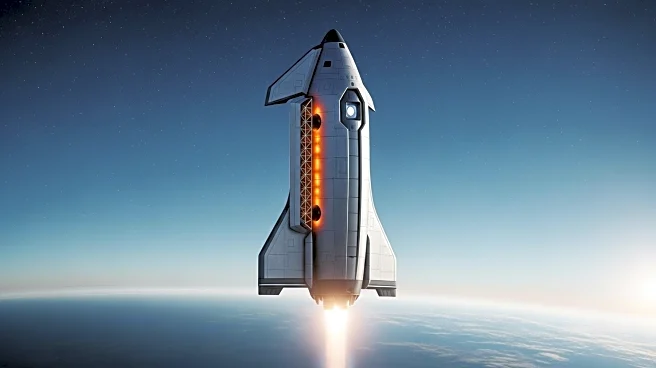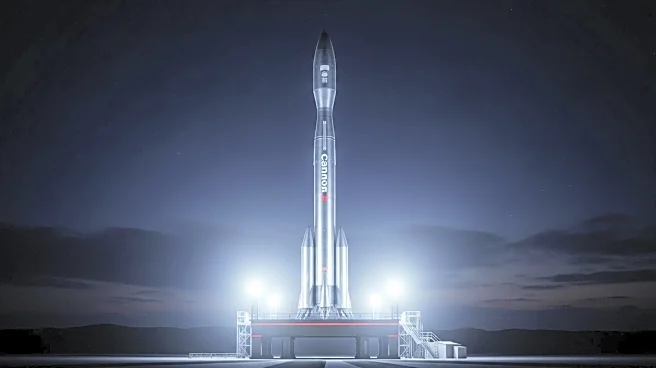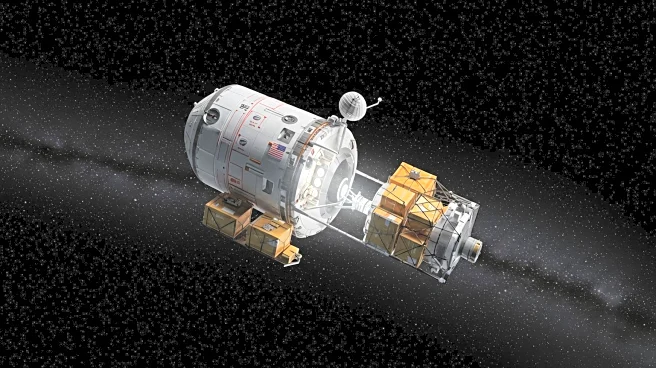What's Happening?
SpaceX's Starship successfully launched after overcoming previous setbacks, marking a significant milestone for the reusable spacecraft. The launch tested the ship's new heat shield tiles and satellite deployment capabilities. The upper half of the rocket separated as planned, and the mission included a successful splashdown in the Indian Ocean. This test flight follows a series of failures, raising hopes for the spacecraft's role in future Mars missions and NASA's lunar projects.
Why It's Important?
The successful launch of Starship is crucial for SpaceX's long-term goals of Mars colonization and supporting NASA's lunar missions. The reusable design of the spacecraft promises to reduce costs and increase the frequency of space travel. Overcoming the challenges of the heat shield is particularly significant, as it addresses one of the most complex engineering hurdles in reusable spacecraft design. This success reinforces SpaceX's position as a leader in the space industry and advances the potential for human exploration beyond Earth.
What's Next?
SpaceX will continue to refine Starship's design, focusing on improving the heat shield and testing its capabilities in various flight scenarios. The company aims to achieve a fully reusable spacecraft that can be rapidly turned around for multiple missions. Future tests will likely focus on in-orbit refueling and other critical technologies needed for deep-space missions. The success of these efforts will be pivotal in meeting timelines for NASA's lunar lander and SpaceX's Mars ambitions.













